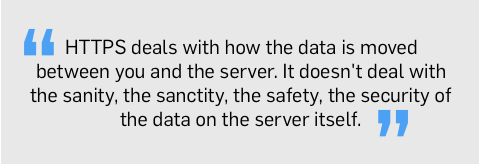Stealth Mango Proves Malware Success Doesn’t Require Advanced Tech
Reports on new strains of malware and dissection of its operation are common at security conferences. Less common: Full end-to-end reports of the malware, the infrastructure underneath it, and the organization behind it. But on Aug. 9, that’s what Lookout’s Andrew Blaich and Michael Flossman will present at Black Hat USA.
“Our presentation is covering a targeted surveillance campaign where we identified an Android tool called Stealth Mango being deployed in targeted attacks, as well as a related iOS tool that was identified as being created by the same developers,” says Flossman, head of Lookout’s threat intelligence services. “While we do focus primarily on the Android tool and the information that the actors behind that tool were able to steal, we also dive into the background information around the group that was responsible for its development and creation.”
Stealth Mango and the related iOS software, Tangelo, are surveillanceware that is based on technology developers use for their more common offerings in spouseware. “The capabilities are really similar between [Stealth Mango and], for example, a spouseware tool — an application that is something that you would deploy on your significant other’s phone or desktop to keep tabs on them,” Flossman says. “Basically what we’ve found in a lot of our investigations is that the kind of people that would deploy spouseware are interested in the same kinds of information that a nation-state would be interested in.”
(See Blaich and Flossman’s Black Hat USA talk on August 9, “Stealth Mango and the Prevalence of Mobile Surveillanceware“)
The two researchers weren’t necessarily looking for Stealth Mango when it showed up in the research. “We were just looking for interesting cases of surveillanceware, and as we were working in-depth and started to examine the malware and look at more about the servers it was talking to, we really discovered what we had on our hands there,” says Blaich, security researcher and head of device intelligence at Lookout.
And what they had was a campaign that was successful despite its lack of cutting-edge technology or technique.
“We’re quite certain that it was created specifically for this customer,” Flossman says. “So in that regard, it’s like a bespoke solution” — though one built almost entirely from “off-the-rack” parts.
“It’s quite standard, and nothing really stands out,” Flossman says. “What I would say is interesting is the overall context around its use: the actors deploying it, but also just how much success they’ve had with this tool despite what might be taken as a lack of sophistication.”
That success offers an economics lesson to other threat actors. “It really shows that sometimes you don’t need a very complex or expensive solution to achieve your goals,” Blaich says.
“A good way of thinking about this is that if you purchased Pegasus and it came with a bunch of zero-day exploits, you’d be quite cautious in how you deploy them. You’d make sure that they never would fall into the hands of researchers because basically, if that happened, you’d be burning a zero-day investment which these days is well over $100,000,” Flossman says. “Comparatively, an attack like [Stealth Mango] is something that would cost several thousand dollars, max.”
Those several thousands dollars in this case would be spent with a group that Blaich and Flossman say has been behind earlier attacks against the Indian military, including Operation C Major and Operation Transparent Tribe. In the current Stealth Mango campaign, they’re covering their bases by using both their surveillanceware and commodity Trojans like Crimson RAT.
Flossman says that the group’s Trojan use isn’t new, but, like the surveillanceware, it is evolving. “If we look at the mobile malware they used in [C Major and Transparent Tribe], it was even less sophisticated than what we saw now, so they’ve evolved that tool and have worked on building it out,” he says. “And we can see they’re getting a fair bit of value from the mobile side of things now.”
“[As a whole], this ties back into providing really good insight into exactly what adversaries in the mobile space need to do in order to be effective,” Flossman adds. “It’s a lot lower than what we often expect.”
Related Content:
- New Android Smartphones in Developing Markets Sold With Pre-installed Malware
- 10 Tips for More Secure Mobile Devices
- Modern Cybersecurity Demands a Different Corporate Mindset
- APT Attacks on Mobile Rapidly Emerging

Black Hat USA returns to Las Vegas with hands-on technical Trainings, cutting-edge Briefings, Arsenal open-source tool demonstrations, top-tier security solutions and service providers in the Business Hall. Click for information on the conference and to register.
Curtis Franklin Jr. is Senior Editor at Dark Reading. In this role he focuses on product and technology coverage for the publication. In addition he works on audio and video programming for Dark Reading and contributes to activities at Interop ITX, Black Hat, INsecurity, and … View Full Bio






